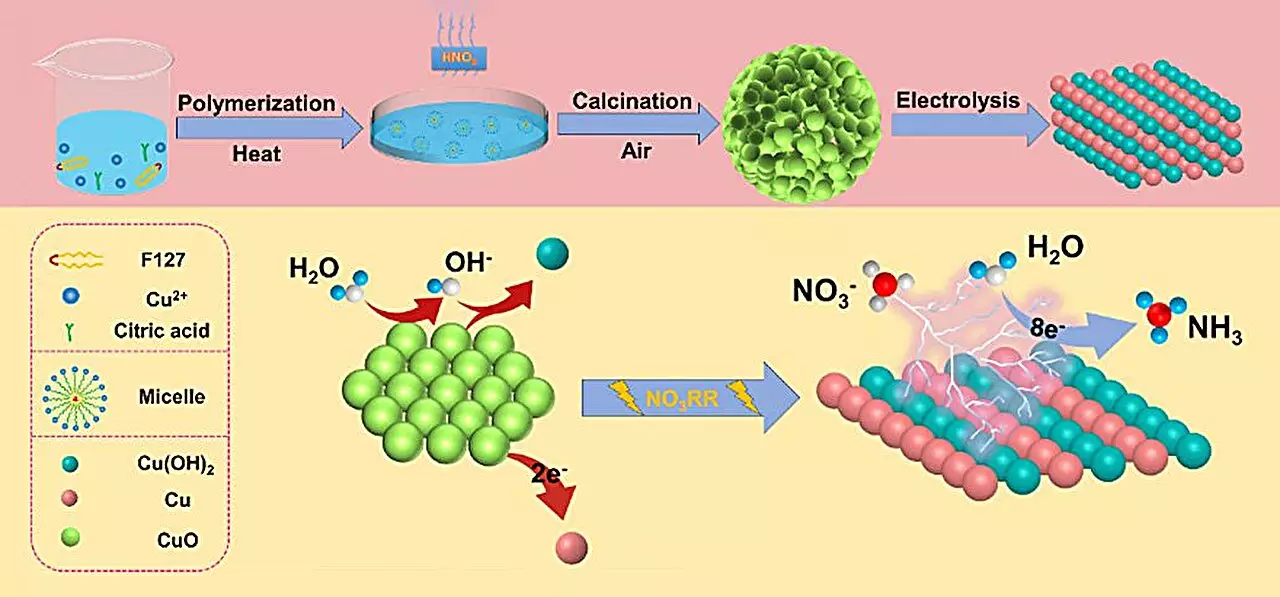Ammonia is an indispensable chemical, vital not just in the synthesis of fertilizers but also across a range of industrial applications, including the manufacture of plastics, explosives, and textiles. With a staggering global market size that reaches approximately 175 million metric tons and a value of around $67 billion, ammonia stands as a cornerstone of the global economy. Its importance has surged further with the shift towards a hydrogen economy, where ammonia serves as a high-energy-density carrier of hydrogen. However, traditional ammonia synthesis primarily hinges on the Harber-Bosch process—a method notorious for its energy demands and significant carbon dioxide emissions, underscoring the urgent need for more sustainable production methods.
Recent advancements in research are setting the stage for a transformative shift in ammonia production techniques. A pivotal study from a team at Tohoku University, led by Hao Li, explores electrochemical methods aimed at converting nitrate (NO3-) into ammonia (NH3). The findings, published in the journal Advanced Science, suggest that utilizing nitrate reduction could herald a new era in ammonia synthesis.
This alternative pathway presents itself as a game-changer compared to traditional methods. The nitrogen reduction reaction (NRR), typically reliant on breaking the robust N≡N bond of nitrogen gas (N2), is notably more difficult. In contrast, nitrate reduction takes advantage of significantly lower dissociation energies and the water solubility of nitrate, streamlining ammonia production while simultaneously tackling the environmental issue of nitrate accumulation in water supplies. By capitalizing on this efficient approach, researchers can potentially reduce carbon emissions associated with ammonia production.
Central to this breakthrough is the innovative use of a spherical copper (II) oxide (CuO) catalyst developed by Li and his colleagues. This catalyst, characterized by the stacking of small particles endowed with oxygen-rich vacancies, exhibited an impressive ammonia yield of 15.53 mg h-1 mgcat-1. Remarkably, it achieved a Faraday efficiency of 90.69% in a neutral electrolyte environment, operating at a voltage of -0.80 V compared to the reversible hydrogen electrode. What sets this catalyst apart is its transformational ability during the reduction process.
The study revealed that the CuO catalyst undergoes a significant phase change to a Cu/Cu(OH)2 structure during the electrochemical reaction, which enhances phosphorus performance. According to co-author Qiuling Jiang, this phase transformation increases available active sites and improves electron transfer capabilities, resulting in superior efficiency for the nitrate reduction reaction.
To deepen their understanding of the catalytic mechanisms at play, the research employs density functional theory (DFT) calculations. These computational analyses elucidate how the formation of Cu(OH)2 compounds can lower the energy barriers for nitrate adsorption, making the overall process more energetically favorable. Additionally, the study indicates that during this reaction, the newly formed Cu(OH)2 structure mitigates the competing hydrogen evolution reaction, while specific Cu (111) crystal surfaces enhance the hydrogenation process.
Hao Li captures the essence of their findings, noting that the knowledge gained from this research could significantly inform the design of copper-based catalysts capable of electrocatalytic ammonia production. By mastering the conditions under which reaction occurs, researchers can optimize catalyst performance, driving towards more efficient and scalable means of ammonia synthesis.
With a foundation firmly laid, the team at Tohoku University is poised to continue its exploration into the factors influencing catalyst phase transitions during the reduction process. Insights into these transitions are crucial for enhancing the stability, activity, and selectivity of the catalysts. By refining these parameters, they aim to bring the vision of sustainable ammonia production closer to fruition, contributing to a greener industrial future.
The shift from conventional ammonia production methods to innovative electrochemical nitrate reduction processes could not only redefine ammonia synthesis but also support broader environmental objectives and an evolving hydrogen economy—thus marking a step towards sustainable industrial practices.

